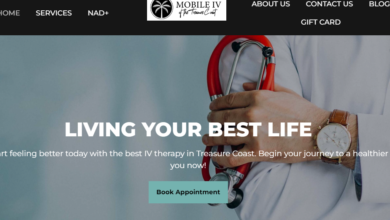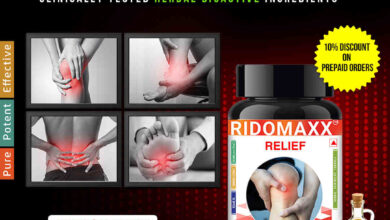Hyperbaric Chamber Oxygen Therapy: A Comprehensive Guide
Hyperbaric Oxygen Therapy (HBOT) is an advanced medical treatment that involves breathing pure oxygen in a pressurized chamber. Originally developed to treat decompression sickness in divers, HBOT is now widely used for a variety of medical conditions due to its ability to enhance the body’s natural healing process.
This guide will explore the fundamentals of hyperbaric oxygen therapy, its benefits, the conditions it treats, and what you can expect during a session.
1. What is Hyperbaric Oxygen Therapy?
Hyperbaric Oxygen Therapy involves placing a patient in a specially designed chamber where they breathe in 100% oxygen at a pressure that is 1.5 to 3 times higher than normal atmospheric pressure. The increased pressure allows more oxygen to dissolve in the blood, tissues, and fluids, which can accelerate healing and improve various medical conditions.
There are two main types of hyperbaric chambers:
- Monoplace Chamber: This is a single-person chamber that looks like a long tube. The patient lies inside while the entire chamber is pressurized with pure oxygen.
- Multiplace Chamber: This larger chamber can accommodate multiple people at the same time. Patients wear masks or hoods to receive oxygen while the chamber itself is pressurized with regular air.
2. How Does Hyperbaric Oxygen Therapy Work?
During HBOT, the high concentration of oxygen under pressure increases the amount of oxygen that your blood can carry. This surplus of oxygen helps to:
- Promote Wound Healing: HBOT stimulates the growth of new blood vessels, improves blood flow, and increases the availability of essential nutrients and oxygen to tissues, accelerating the healing process.
- Reduce Swelling and Inflammation: The therapy reduces inflammation by constricting blood vessels, which helps manage conditions like burns, crush injuries, and other traumas.
- Fight Infections: High oxygen levels boost the immune system’s ability to fight infections by enhancing white blood cell function and inhibiting the growth of harmful bacteria, especially those that thrive in low-oxygen environments.
- Enhance the Effects of Antibiotics: HBOT can improve the effectiveness of certain antibiotics, particularly in treating stubborn infections such as osteomyelitis (bone infection).
3. Conditions Treated by Hyperbaric Oxygen Therapy
Hyperbaric Oxygen Therapy is recognized as an effective treatment for a wide range of medical conditions. Some of the most common include:
- Chronic Wounds: Non-healing wounds, such as diabetic foot ulcers, venous leg ulcers, and pressure sores, respond well to HBOT by promoting tissue repair and reducing the risk of amputation.
- Radiation Injuries: Patients who have undergone radiation therapy for cancer may experience tissue damage known as radiation necrosis. HBOT helps repair this damaged tissue, improving symptoms and quality of life.
- Carbon Monoxide Poisoning: HBOT quickly reduces carbon monoxide levels in the blood, preventing damage to the brain, heart, and other organs.
- Decompression Sickness: Commonly known as “the bends,” this condition affects divers who surface too quickly. HBOT helps dissolve gas bubbles in the blood and reduces associated symptoms.
- Severe Infections: HBOT is used to treat infections like gangrene and necrotizing fasciitis (flesh-eating disease), where increased oxygen levels help control the spread of infection.
- Thermal Burns: By enhancing oxygen delivery to the burn area, HBOT reduces tissue swelling and supports the healing process.
- Traumatic Brain Injuries and Stroke: Although still being studied, HBOT has shown promise in reducing brain swelling and enhancing recovery following head injuries and strokes.
- Sudden Hearing Loss: For some individuals, HBOT can help recover hearing by reducing inflammation and improving blood flow to the inner ear.
4. Benefits of Hyperbaric Oxygen Therapy
Hyperbaric Oxygen Therapy offers numerous health benefits, many of which extend beyond the primary treatment of specific conditions:
- Enhanced Healing and Recovery: The increased oxygen availability helps speed up the recovery of damaged tissues, particularly for chronic wounds and post-surgical healing.
- Reduced Inflammation: HBOT’s anti-inflammatory effects can improve conditions associated with inflammation, such as arthritis, injuries, and other inflammatory diseases.
- Improved Immune Function: By enhancing white blood cell activity, HBOT boosts the body’s ability to fight off infections, especially in areas where circulation is poor.
- Better Blood Flow and Circulation: The therapy stimulates angiogenesis, the formation of new blood vessels, improving circulation in compromised areas.
- Pain Reduction: Many patients experience a reduction in pain and discomfort due to the anti-inflammatory effects of HBOT.
- Cognitive and Neurological Benefits: HBOT is being explored for its potential in improving cognitive function and aiding recovery from neurological conditions like stroke, traumatic brain injury, and Alzheimer’s disease.
5. What to Expect During Hyperbaric Oxygen Therapy
If you are considering HBOT, understanding the treatment process can help you feel more comfortable:
- Initial Consultation: Your first step will be a consultation with a hyperbaric medicine specialist who will review your medical history, perform a physical examination, and determine if you are a suitable candidate for HBOT.
- Pre-Treatment Preparation: Before entering the chamber, you may be asked to change into a cotton gown and remove any metallic objects, jewelry, or electronic devices. You should also avoid using any flammable products, such as lotions or hair sprays.
- During the Session: Once inside the chamber, you will begin to breathe 100% oxygen as the pressure is gradually increased. You may experience a feeling similar to taking off in an airplane, with pressure in your ears. Swallowing, yawning, or pinching your nose and blowing gently can help equalize ear pressure.
- Session Duration: A typical HBOT session lasts between 60 to 90 minutes, depending on your condition and treatment plan. You can relax, listen to music, or watch TV during the session.
- Post-Treatment: After the session, the chamber will gradually depressurize. You may feel lightheaded or tired temporarily, but these sensations usually pass quickly.
6. Risks and Considerations
While HBOT is generally safe, it’s important to be aware of potential risks:
- Barotrauma: Pressure changes can cause ear or sinus pain, especially if you have a cold or sinus congestion. Equalizing techniques help minimize this risk.
- Oxygen Toxicity: Breathing high levels of oxygen for extended periods can lead to oxygen toxicity, affecting the lungs or central nervous system. Treatment protocols are carefully designed to minimize this risk.
- Temporary Vision Changes: Some patients experience temporary nearsightedness after multiple HBOT sessions, but vision typically returns to normal after the treatment course is completed.
- Claustrophobia: Some individuals may feel uncomfortable in the confined space of the chamber. Relaxation techniques, sedation, or using a multiplace chamber may help alleviate anxiety.
7. Finding Hyperbaric Oxygen Therapy Services
If you’re considering HBOT, look for a certified facility with trained medical professionals who specialize in hyperbaric medicine. Discuss the potential benefits and risks with your doctor to determine if this therapy is appropriate for your condition.
Conclusion
Hyperbaric Oxygen Therapy offers a powerful, non-invasive treatment option for a wide range of medical conditions. By enhancing the body’s natural healing processes, HBOT can improve outcomes, reduce recovery times, and enhance overall health.
Whether you’re dealing with chronic wounds, severe infections, or other conditions, HBOT may be a valuable addition to your treatment plan. Consult with a healthcare provider to explore how this innovative therapy can support your healing journey.



